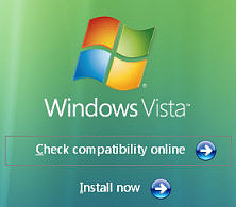Build a Windows Vista Upgrade Parachute
Upgrade Paths From XP To Vista
There are several benefits of an in-place upgrade from XP to Vista. You don't have to worry about transferring settings, and keeping the same hardware is more environmentally friendly. Best of all, you save money: not only on the hardware, but because the Vista upgrade license is cheaper than a brand new license. Before you actually go ahead and upgrade, it pays to download the Windows Vista Upgrade Advisor and see what it says about your existing computer.
Here is a table of upgrade options. With all pre-Vista versions of Windows listed, you are entitled to buy an upgrade package. In-place upgrades allow you to install over your existing copy of pre-Vista Windows, saving applications and settings. Clean Install upgrades will overwrite your existing pre-Vista Windows installation.
| Header Cell - Column 0 | Windows Vista Home Basic | Windows Vista Home Premium | Windows Vista Business | Windows Vista Ultimate |
|---|---|---|---|---|
| Windows XP Professional | Clean Install | Clean Install | In-place | In-place |
| Windows XP Home | In-place | In-place | In-place | In-place |
| Windows XP Media Center | Clean Install | In-place | Clean Install | In-place |
| Windows XP Tablet PC | Clean Install | Clean Install | In-place | In-place |
| Windows XP Professional X64 | Clean Install | Clean Install | Clean Install | Clean Install |
| Windows 2000 Professional | Clean Install | Clean Install | Clean Install | Clean Install |
The XP upgrade options essentially recognize the common features in similar versions of XP and Vista. XP Pro X64 has been such a strange bird that it's not surprising that no upgrades are permitted, even though all versions of Vista discussed here include 32-bit and 64-bit versions. The Windows 2000 workstation version, Professional, likely presented such complex issues that an upgrade was ruled out. This is no doubt further rationalized by Microsoft based on the fact that the Windows 2000 product line is no longer supported by Microsoft except under a special contract between the company and Win2K owners.
The Actual Vista Installation
If you buy a new machine, it will probably have Vista pre-installed. However, if you have to install a fresh copy of Windows Vista or upgrade an XP machine, Microsoft has made the operation even simpler than an XP install. All you need is the installation optical disk and product key, which is usually on the back of the CD or underneath the Perspex holder. What has made installing Vista even easier than XP is that Microsoft has moved all the locale information to the beginning of the install. Another improvement is there is no pause after 37 minutes asking you for network information.
At the end of all of the copying and configuring, Vista asks you for a username and password. It then asks for the current use of the machine so that Vista can optimize its settings for home, work or a public location.
Tip: If you are installing Vista just to test the features, or only out of curiosity, un-check the Activate Online box. This will let you legitimately conserve your "activation lives". I suggest that you start with a non-activated installation, then after say a week, either choose to activate your license online, or re-install with a bigger partition and activate that installation.
Get Tom's Hardware's best news and in-depth reviews, straight to your inbox.
Current page: Upgrade Paths From XP To Vista
Prev Page Build a Windows Vista Upgrade Parachute Next Page Vista Security-
Performing an upgrade to Vista is quite straight forward just follow the instructions here - http://www.nettechguide.com/how-to-upgrade-to-windows-vista/Reply
Personally I dont think you really need any tools to install or upgrade to vista but whatever floats your boat.
